
Mammillaria phitauiana Photo by: Valentino Vallicelli
Origin and Habitat: Mammillaria phitauianaSN|9328]]SN|9328]] is found by Baxter at east of Todos Santos, Sierra de la Laguna, in the southern tip of the state of Baja California , Mexico. It has a relatively restricted range (its extent of occurrence is under 5,000 km2)
Altitude: 90-900 metres above sea level.
Habitat: It is relatively abundant and grows in open plains and on the lower slopes of low hills under the protection of small scrubs, brushwood and trees in low deciduous forest on granitic rocks, together with Mammillaria marshalliana and Ferocactus townsendianusSN|11991]]SN|11991]]. The soil is acidic and rich in humus, since the organic rest, the shade and the humidity of the coast, favour this condition. The major threat for Mammillaria phitauianaSN|9328]]SN|9328]] is cattle ranching, mainly by the trampling that erodes the soil affecting the establishment of new plants.
Synonyms:
See all synonyms of Mammillaria phitauiana
back
Accepted name in llifle Database:Mammillaria phitauiana (E.M.Baxter) Werderm. in Backeb.Neue Kakteen 96 (1931).Synonymy: 11
back
Description: Mammillaria phitauianaSN|9328]]SN|9328]] is a small cactus solitary at first, later forming clusters from basal branches.
Stems: Short-cylindric to culumnar, pale-green 25-30 cm high and 4-5 cm in diameter. Without latex.
Tubercles: Quadrangular sub-conical, 7 mm long and 6 mm in diameter, keeled. Axil with some short white wool and silky bristles.
Radial spines: 18-24 (usually 20), yellowish white, bristle-like, radiating, 4-12 mm long, lower one the longest.
Central spines: 4(-6), straight or with one of them hooked, white with brownish tips, to 12 mm long.
Flowers: White, yellowish white or cream with pale pink to brown small midstripes, 20-25 mm long and 15-18 mm in diameter. Often failing to open completely.
Fruits: Club-shaped, red, 15 - 30 mm long, 6 - 10 mm in diameter.
Seeds: Black, 0,8 - 0,9 mm long and 0,6 mm wide
Blooming season: From May to June.
Bibliography: Major references and further lectures
1) Pilbeam J., “The Cactus file, Mammillaria” 6: 120, Cirio Pub. Services, 01/Dec/1999
2) John Pilbeam “Cacti for the Connoisseur: A Guide for Growers & Collectors” Timber Press, 01/lug/1987
3) James Cullen, Sabina G. Knees, H. Suzanne Cubey "The European Garden Flora Flowering Plants: A Manual for the Identification of Plants Cultivated in Europe, Both Out-of-Doors and Under Glass" Cambridge University Press, 11/Aug/2011
4) David R Hunt; Nigel P Taylor; Graham Charles; International Cactaceae Systematics Group. "The New Cactus Lexicon" dh books, 2006
5) Edward Anderson “The Cactus family” Timber Press, Incorporated, 2001
6) León de la Luz, J.L., Hernández, H.M. & Gómez-Hinostrosa, C. 2013. Mammillaria phitauiana. In: IUCN 2013. "IUCN Red List of Threatened Species." Version 2013.2. <www.iucnredlist.org>. Downloaded on 11 January 2014.
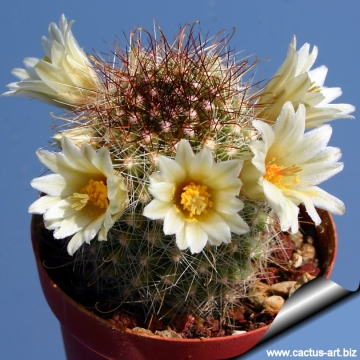 Mammillaria phitauiana Photo by: Cactus Art
Mammillaria phitauiana Photo by: Cactus Art - (Rancho Labuerra, Baja California, Mexico) This is an unusual plant in collections that require acidic organic soil. Photo by: Valentino Vallicelli
- (Rancho Labuerra, Baja California, Mexico) This is an unusual plant in collections that require acidic organic soil. Photo by: Valentino Vallicelli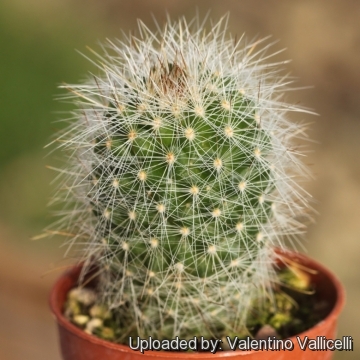 SB1259 North of San Jose del Cabo, South Baja California, Mexico Photo by: Valentino Vallicelli
SB1259 North of San Jose del Cabo, South Baja California, Mexico Photo by: Valentino Vallicelli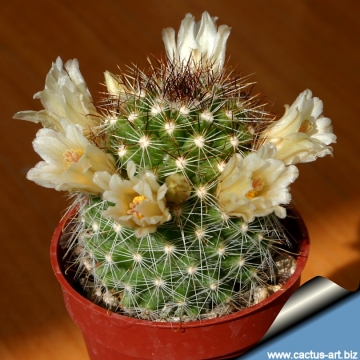 Mammillaria phitauiana Photo by: Cactus Art
Mammillaria phitauiana Photo by: Cactus Art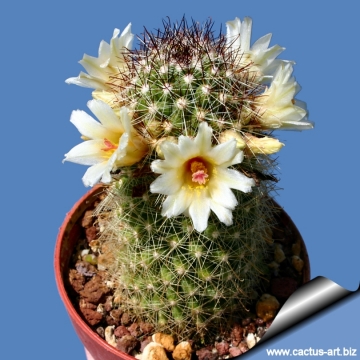 Mammillaria phitauiana Photo by: Cactus Art
Mammillaria phitauiana Photo by: Cactus Art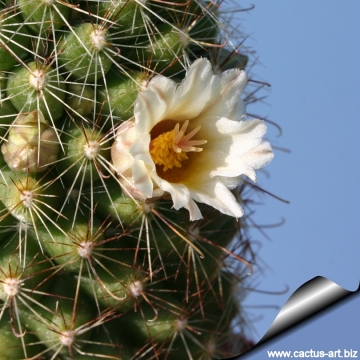 Mammillaria phitauiana Photo by: Cactus Art
Mammillaria phitauiana Photo by: Cactus Art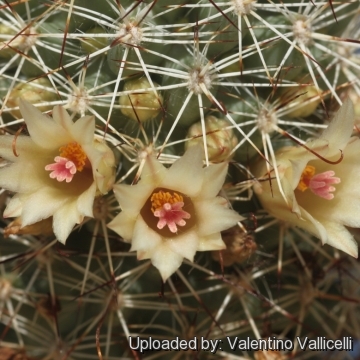 Mammillaria phitauiana Photo by: Valentino Vallicelli
Mammillaria phitauiana Photo by: Valentino Vallicelli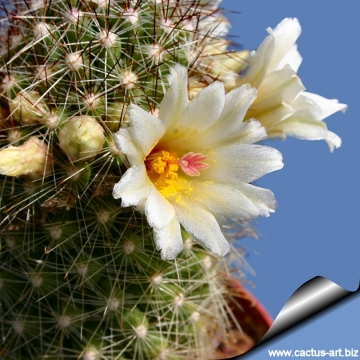 Mammillaria phitauiana Photo by: Cactus Art
Mammillaria phitauiana Photo by: Cactus ArtCultivation and Propagation: It is a slow growing species. Water occasionally in winter so the roots do not dry out completely, and water regularly in summer. Some growers suggest to use exclusively rain water. But be careful, as it will rot easily if the substrate is wet and cold. It tends to lose its roots in winter. The root system of this plant is comparatively small, and it is best to grow it in a shallow with good drainage pot using a very porous and slightly acidic compost, with plenty of extra grit. Give an occasional tonic of sequestrated iron. Feed with a high potassium fertilizer in summer.
Usually it is recommended to overwinter this plant in a bright and warm greenhouse with at least 8-10° C , but it proved to be quite frost resistant (if kept dry it is hardy as low as -5° C) Strong light (but not direct sun) is required for flowering. Some plants will offset readily, and clumps can be produced in a very few years.
Propagation: Direct sow after last frost, cuttings.
Your Photos
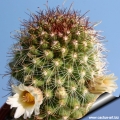
by Cactus Art




















